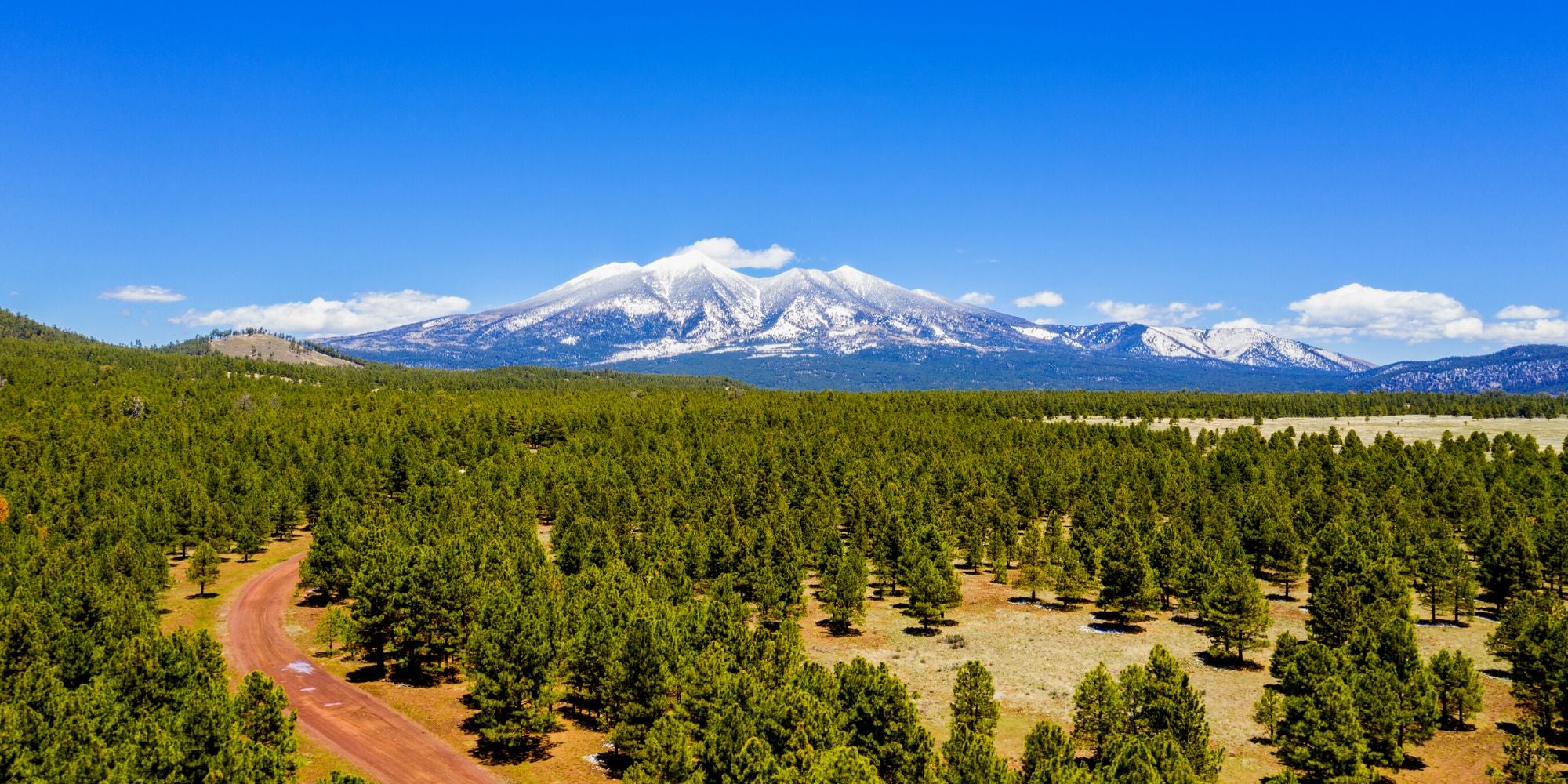
When people come to Flagstaff Arizona for the first time, most are surprised about how high the mountains actually are. With our expertise on high altitudes, we'll detail everything about Flagstaff altitude and our top tips how to avoid Flagstaff altitude sickness.
Flagstaff altitude is 6,909 feet (2,106 m) in elevation.¹ In comparison, Phoenix is only 1,086 feet (331 m) high.
The city is of Flagstaff, known for its beautiful mountain views, is located in northern Arizona just south of the Grand Canyon. It sits right near the base of Mount Elden and Mount Humphreys, two prominent peaks in the San Francisco Peaks range.
Humphreys Peak is the highest mountain point in all of Arizona, sitting at 12,633 feet (3,851 m) in altitude.
Arizona Snowbowl Ski Resort is the premier ski resort in Flagstaff, and the highest in Arizona. Two others include Sandia Peak and Sunrise Park Resort. These altitudes get much higher, with Arizona Snowbowl Ski Resort peaking at 11,500 feet (3,505 m).
These Flagstaff altitudes are very high for not only visitors, but even locals coming from Phoenix or Tucson.
Is it true that you can get altitude sickness in Flagstaff? The short answer is yes.
With Flagstaff at 6,909 feet high, there's a significant chance of getting altitude sickness. In Denver for example, at only 5280 feet high, many visitors experience altitude sickness symptoms.
High altitude starts between 4,900 and 11,500 feet in elevation according to Mountain Medicine, in which Flagstaff qualifies as.² Furthermore, if you're skiing or hiking in places such as the ski resorts such as Arizona Snowbowl Ski Resort at between 9,200 to 11,500 feet, your risk of altitude sickness goes up drastically.
It's best to be well prepared on how to prevent and avoid Flagstaff altitude sickness.
As a common problem for visitors, Flagstaff altitude sickness can really set back your trip.
Flagstaff altitude sickness, also called acute mountain sickness, is mainly caused by the lower oxygen levels in the air at higher elevations.
Between the lower oxygen levels, increased respiration, and overall physiological stress on the body ─ it's not uncommon to feel malaise, headaches, and nausea. Symptoms of altitude sickness usually happen in about 6 to 24 hours of arriving at higher altitudes.
Flagstaff altitude sickness symptoms include:
Flagstaff altitude sickness can set back your trip if you're not properly prepared.
If you're planning on traveling to Flagstaff or anywhere else in the mountainous regions of Arizona, it's important that you know what to do to prepare.
As an altitude-based company, we have in depth experience and research on high altitudes. From hydration to altitude supplements, we'll cover all the top tips so you can enjoy your Flagstaff trip.
Here Are 4 tips How To Avoid Flagstaff Altitude Sickness:
In conclusion, to best prepare to avoid Flagstaff altitude sickness ─ acclimate slowly, maximize your hydration, get proper rest, and take some altitude supplements.

Zaca chewables ─ first made popular in the Rocky Mountains of Colorado ─ are a supplement designed to help you rehydrate, replenish, and recover. Formulated with glutathione, along with other powerful herbs, these fast-acting chewables are loaded with 1100mg of ingredients to support your body. Simply take 2 chewables each day prior to your trip, and 2-4 chewables each day while on your trip. Try Zaca Chewables today and power your altitude trip.
SOURCES
1. Flagstaff Arizona Elevation
https://en.wikipedia.org/wiki/Flagstaff,_Arizona
2. Effects of high altitude on humans
https://en.wikipedia.org/wiki/Effects_of_high_altitude_on_humans
3. Effect of high altitude (7,620 m) exposure on glutathione
https://pubmed.ncbi.nlm.nih.gov/11320641/